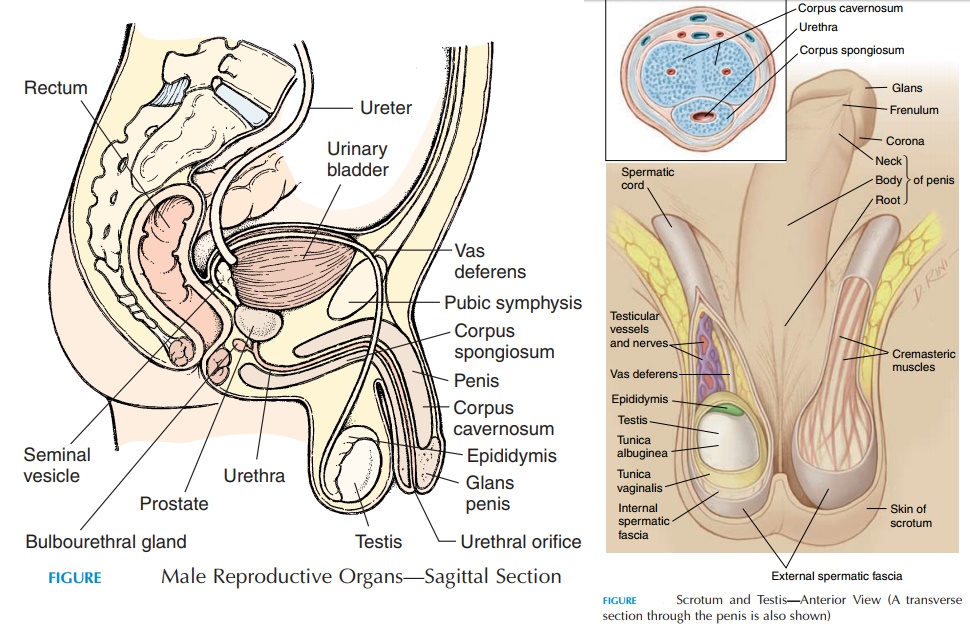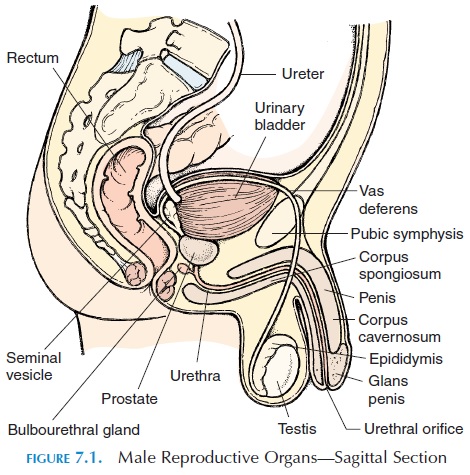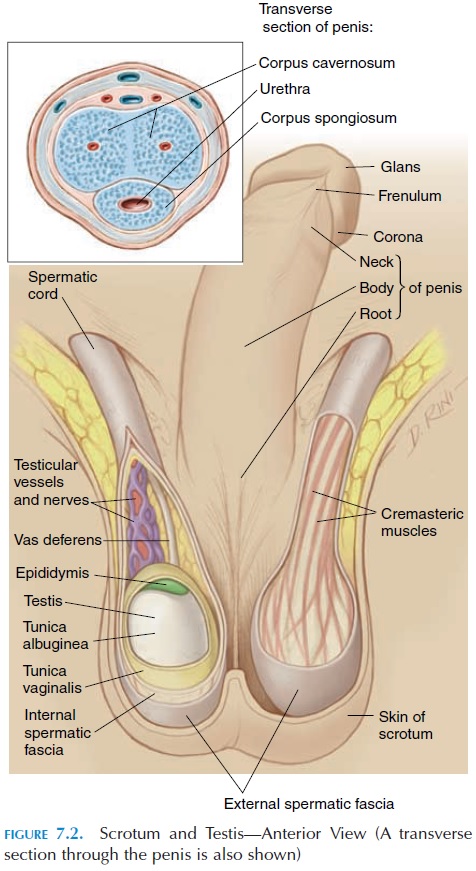Chapter: The Massage Connection ANATOMY AND PHYSIOLOGY : Reproductive System
Penis - Male Reproductive System

PENIS
The penis is the tubular organ through which the urethra passes before it opens into the exterior. The penile urethra serves as a common passage for urine as well as ejaculate. The penis helps to introduce the ejaculate into the vagina of the female.

The penis consists of a maze of vascular channels in three cylindrical columns—two corpus cavernosa and one corpus spongiosum(Figures 7.1 and 7.2). The latter surrounds the penile urethra. The columns are surrounded by thick, elastic connective tissue and smooth muscle. The blood flow through the channels varies according to the state of sexual arousal. The penis is divided into theroot, body,neck, and glans. The root is the portion attached tothe body wall, inferior to the pubic symphysis, and consists of the bulbof the penis (the expanded por- tion of the corpora spongiosum) and the crura (the two, separated portions of the corpora cavernosa). The bulb of the penis is attached to the perineal mus-cles and fascia and is surrounded by the skeletal mus-cle (bulbospongiosus).The crura are attached to the pubic rami and are surrounded by the bulbocaver-nosus muscle. The bulbospongiosus and bulbocaver-nosus help with ejaculation. The body (shaft) is the movable portion and the glans is the enlarged distal end. The neck is the narrow portion between the shaft and the glans. The thin, delicate fold of skin that overlies the tip of the penis is known as the prepuce. In many males, the prepuce is surgically removed by a procedure known as circumcision.

Related Topics